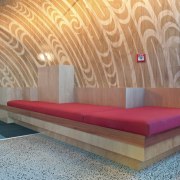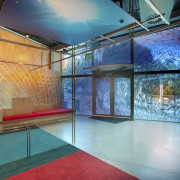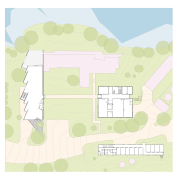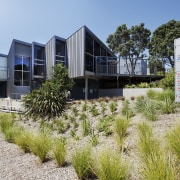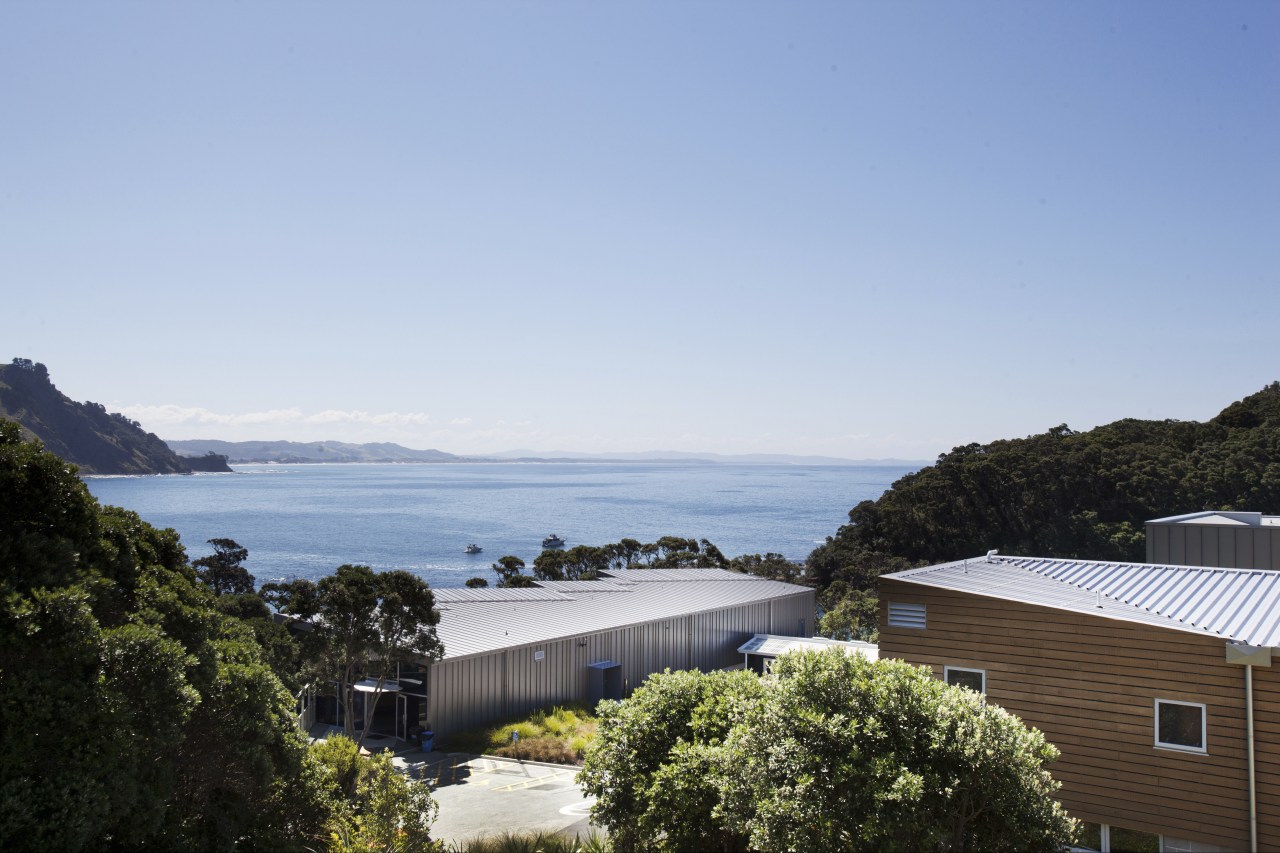Under the Microscope
University marine research institute includes new visitor centre
A unique location calls for a unique design response, and there's no doubt that the Goat Island Marine Reserve at Leigh, north of Auckland, fits such a classification.
The waters teem with marine life from estuary, gulf and ocean, and it is due to such abundance that the reserve is recognised both locally and internationally as a significant research site. The area is home to the University of Auckland's Leigh campus the South Pacific Marine Research Institute, comprising the Leigh Marine Laboratory and Edith Winstone Blackwell Interpretive Centre.
The significance of the reserve and the research undertaken by marine scientists and students has led to the redevelopment of the campus to better suit the needs of the university and staff. But the redevelopment has also been about educating the public on the role of the institute, says architect Pip Cheshire, who was commissioned to masterplan and design the new buildings, which include an interpretive centre and science block.
"Given the relationship between the campus on the hill and the beach below, which draws around 300,000 people annually, the university could see an opportunity to showcase its research," says Cheshire. "This prompted the idea of an interpretive centre for visitors that would be like a front door to the marine science department."
Cheshire says although buildings have been on the site since the late '50s, a full environmental assessment was required for the masterplan.
"The university wanted to maintain the informality of the site and the naturalness of the setting. The buildings needed to tuck in behind the pohutukawa, and there had to be clearly defined public and private areas. This led to the idea of using the architecture to stratify or layer one's experience with the site."
The first building encountered as one approaches the complex is the interpretive centre. The architect says this building needed to attract the public, to draw them up the hill. It also had to create a sense of a destination.
"The architecture needed to have a bit of energy about it, and an openness so people could glimpse the interior. For this reason, the building was conceived as a simple rectangular block, clad in metal and enlivened by a saw-tooth profile to its leading edge. Glazed slots along the saw-tooth facade face inland. Evocative of fish fills, the slots allow approaching visitors to see in."
The aluminium cladding, in three tray widths,creates shadow lines on the facade and shimmers in the light, which offers a degree of refinement to the large volume of the interpretive centre.
The institute sits within a coastal ecosystem, and the buildings were designed to provide a strong sense of connection with this environment by offering views of the water in one direction and of the green hills in the other.
The interior of the interpretive centre presents a large shell with a ceiling that follows the line of the monopitched roof. Services are exposed, but are absorbed visually by the steel framework for exhibitions and interactive displays created by the exhibition team.
"There's a lot going on at eye level, which negates the need for high-end finishing," says Cheshire. "The design was also a response to considerations of budget."
The second new building on site is the science centre, which was designed to step up the slope to minimise its visual impact. This building comprises an aluminium-wrapped volume linked to a timber-clad building. The aluminium building houses the laboratories and other research facilities, while the timber block accommodates the academic offices. A glazed circulation zone links the two. The timber building echoes the design of the large accommodation wing, which was completed one year earlier.
"The science building mediates the other two buildings on site, and the coding of materials determines what is happening on the inside," says Cheshire. "The timber volumes are essentially for administrative work and sleeping, while the steel buildings are dedicated to science. The circulation centre between the two volumes of the science block encourages staff interaction, which is vital to the science community.
"This idea references Louis Kahn's Salk Institute in California, designed during the '60s. Kahn understood that by carefully planning circulation you could encourage people to bump into one another in corridors and on stairs and so create a highly interactive research environment."
Both the timber volume in the science centre and the accommodation building have colourful projecting window boxes. These provide shade, and enrich the facade by offering clues to the life within. In the accommodation building, the coloured boxes house a table and seating for informal meetings. In places this timber facade is pulled out from the structure to create space for a breezeway and sheltered seating areas. It also helps to protect the building from weather extremes.
Credit list
Client
Exhibition design
Quantity surveyor
Engineer
Cladding
Joinery
Flooring
Ceilings
Lift services
Laboratory furniture
Architect
Construction company for accommodation building
Fire consultant
Security system
Roofing
Hardware
Concrete pavers
Airconditioning supply and installation
Smoke curtains
Story by: Colleen Hawkes
Home kitchen bathroom commercial design
Walk this way – garden pathways to lead your thinking
From farmhouse to farmstead
Objets central



